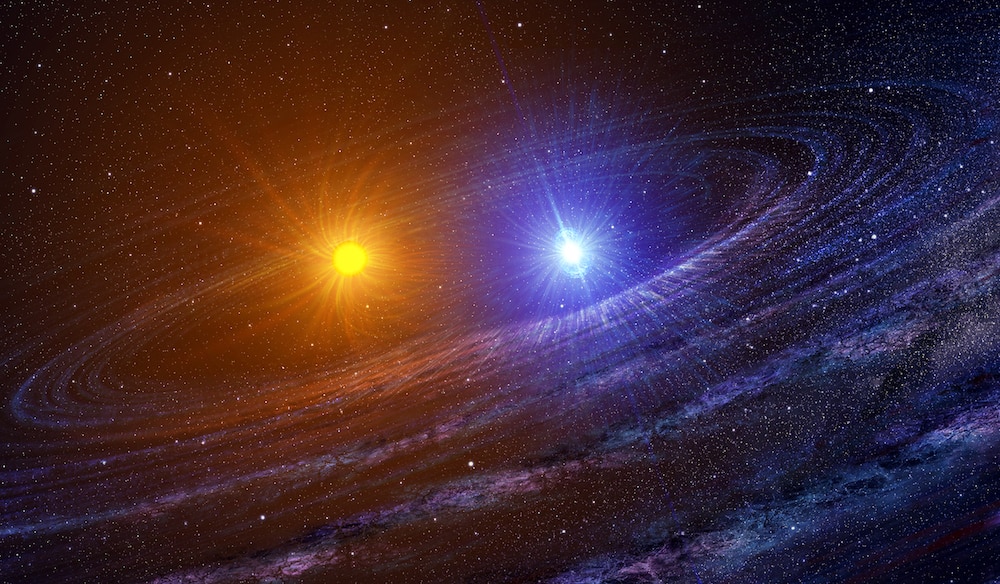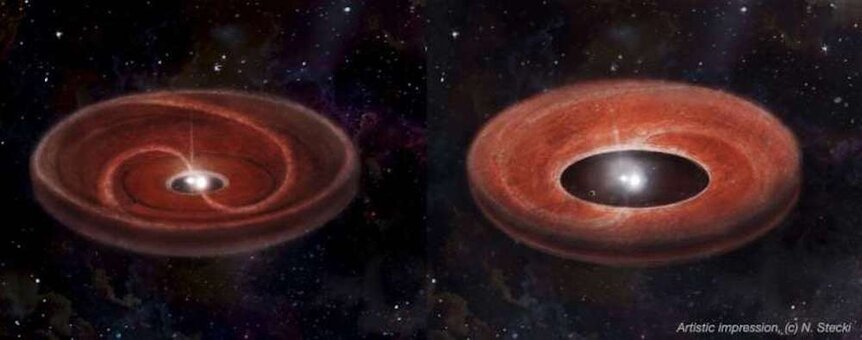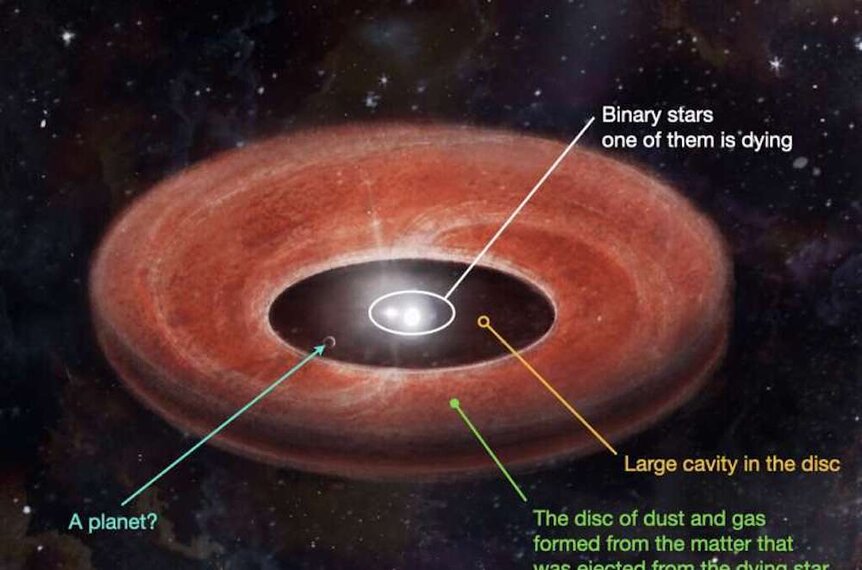Create a free profile to get unlimited access to exclusive videos, sweepstakes, and more!
Planets might still be able to crawl out of dying stars
It's not zombification, but it kind of is.

The cycle of death and regeneration apparently does’t just happen on Earth. Somewhere in the darkness of space, new planets could be emerging from the corpses of stars.
Wait. Our solar system first formed when the Sun was young and blazing. Most star systems are thought to come into being that way. White dwarfs, the cooler cores of dead stars that are left behind like astral bones when those stars die and shed their superheated outer layers, are still at the centers of many star systems. These eerie orbs might even make alien life possible on planets that would otherwise be bombarded with radiation, but could they create new planets?
They might, by accident. If a white dwarf is in a binary system with another star that is still “alive,” all that material it shed when it was gasping its last breaths as a mid-size star is flattened into a disc (much like a protoplanetary disc) by the other star’s gravitational force. Gaping holes in these discs found by astronomer Jacques Kluska of KU Leuven in Belgium, who led a study recently published in Astronomy and Astrophysics, are now suspected to be planet incubators.
“When we saw the relation between the cavity and lack of refractory elements, like iron, on the surface of the white dwarf, it meant dust particles are trapped in the disc,” he told SYFY WIRE. “A giant planet would naturally cause both the cavity and the trapping of the dust in the disk.”
Kluska and his research team were making a catalog of gaseous, dusty discs surrounding binaries with one zombie star when infrared images showed mysterious holes in some of the discs. They realized the holes must be the result of planets accreting some of that star stuff from missing refractory elements that should have otherwise been in the white dwarfs. These elements become solid at extremely high temperatures and come out of nuclear processes, such as nuclear fusion, inside stars, and exist in planets. But how could hypothetical planets actually form?
Planets could form in more than one way. If the disc is massive enough, it is possible for a part of it collapse into what will become a planet because of gravitational instability, or the tendency for an immense disc of gas to collapse under its own gravity. It is also possible that a planet already orbiting the system ended up in the disc and trapped material to form a new planet. Whatever is in there might also be a protoplanet that never grew up, but it was in the right place at the right time and grabbed the chance to accrete enough debris to be called a planet.
“Ideally, we would like to detect the planets directly, but because of the brightness of the central star it will be even more difficult than around classical stars like the Sun,” said Kluska. “We will instead look for signs of planets by studying the disk structure in more detail.”
This could change how we look at the birth of planets and the more unlikely stars that might still be capable of creating them. If the researchers can prove that planets can still appear in discs generated by stars in their death throes, it could mean that the planet-forming potential doesn’t have an expiration date, at least so long as the dead star is orbiting one that is more alive. Out of the 85 binaries that were observed, 10 of them had holes indicative of (again, hypothetical) planets, and their white dwarfs were missing elements that should have been there.
Anything large enough to be considered a planet should have enough gravity to affect the disc, so Kluska and his team will be searching for any weird irregularities. They will be using ALMA and the Very Large Telescope Interferometer (VLTI) to catch anything that looks off. The VLTI relies on two beams of light running into each other so the interference can help it see ridiculously tiny things in space. It also has near- and mid-infrared vision. Klusksa thinks a disc that is getting both eaten away at and disturbed in some way or another might be the evidence they need.
“A planet will perturb the disk not only causing a cavity but also other perturbations such as spirals, vortices or it can even warp the disk,” he said. “We want to look for these substructures and see if a planet can indeed generate them.”




























